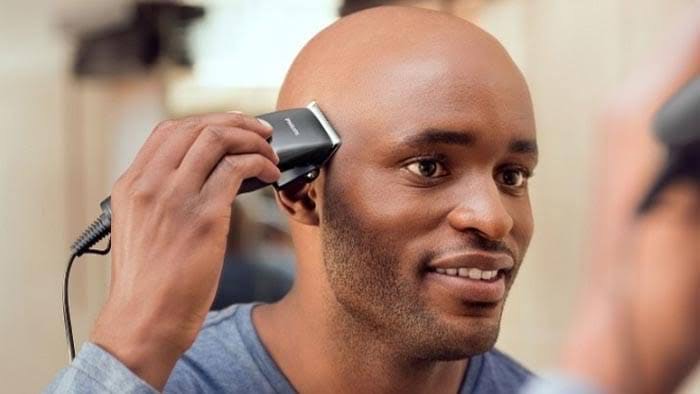Non-Invasive Hair Loss Solutions

June 25, 2025
Hair loss is a widespread concern affecting millions of people across genders and ages. It can be gradual or sudden, and it often leads to psychological stress, loss of confidence, and social anxiety. Fortunately, not all solutions involve surgery or invasive procedures. This comprehensive guide delves into the world of non-invasive hair loss solutions, explaining the causes of hair loss, exploring available treatments, and providing actionable strategies to restore and maintain healthy hair.
Understanding Hair Loss
Common Causes of Hair Loss
1. Genetics (Androgenetic Alopecia): The most common cause, affecting both men and women.
2. Hormonal Changes: Pregnancy, childbirth, menopause, and thyroid imbalances.
3. Medical Conditions: Alopecia areata, scalp infections, or autoimmune diseases.
4. Medications: For cancer, arthritis, depression, heart issues, and high blood pressure.
5. Physical or Emotional Stress: Trauma, illness, or emotional strain can trigger telogen effluvium.
6. Nutritional Deficiencies: Lack of iron, protein, biotin, or zinc.
7. Hair Styling and Treatments: Excessive heat, bleaching, or tight hairstyles.
Types of Non-Invasive Hair Loss Solutions
1. Topical Treatments
a. Minoxidil (Rogaine)
FDA-approved over-the-counter solution or foam.
Enhances blood flow to hair follicles and prolongs the growth phase.
Results in 3–6 months; works best in early-stage hair loss.
b. Caffeine-Based Products
Stimulates hair shaft elongation and cellular energy.
Found in shampoos and serums.
c. Natural Oils
Rosemary oil, peppermint oil, and castor oil are known to support hair growth by improving circulation and reducing inflammation.
2. Oral Supplements
a. Biotin
Supports keratin infrastructure.
Often recommended for brittle hair and nails.
b. Saw Palmetto
A natural DHT blocker; DHT is a major contributor to androgenetic alopecia.
c. Iron & Zinc
Essential for healthy hair growth. Deficiency is often linked to shedding.
d. Marine Collagen & Amino Acids
Supports follicle health and hair structure.
> Pro Tip: Always consult a healthcare provider before beginning any supplement regimen.
3. Low-Level Laser Therapy (LLLT)
Uses red light to stimulate follicular activity.
Delivered through combs, helmets, or caps (e.g., iRestore, HairMax).
Safe, painless, and often recommended alongside other treatments.
Requires consistent use (3–4 times/week).
4. Platelet-Rich Plasma (PRP) – A Minimally Invasive Option
Though technically involving injections, PRP is considered minimally invasive:
Patient’s own blood is processed to extract growth factors.
Injected into the scalp to rejuvenate hair follicles.
Requires multiple sessions; benefits seen after 2–3 months.
Often used in combination with LLLT or microneedling.
5. Scalp Micropigmentation (SMP)
A cosmetic solution, not a regrowth method.
Involves tattooing pigment dots to replicate hair follicles.
Ideal for men with thinning or shaved heads.
Non-invasive, no recovery time, and highly aesthetic.
6. Microneedling (Dermarolling)
Involves rolling fine needles over the scalp to stimulate collagen production.
Enhances absorption of topical treatments like minoxidil or peptides.
Can be done at home (0.25mm rollers) or professionally (deeper needles).
Lifestyle and Diet Changes for Hair Health
Dietary Adjustments
High-Protein Diet: Eggs, lean meat, lentils, and quinoa.
Omega-3 Fatty Acids: Found in salmon, flaxseeds, walnuts.
Vitamin D: Boosts follicular health (sunlight + fortified foods).
Antioxidants: Berries, spinach, green tea to reduce oxidative stress on scalp.
Stress Management
Chronic stress disrupts the hair growth cycle.
Practice meditation, yoga, or deep breathing exercises.
Consider therapy or support groups if dealing with emotional distress.
Scalp Care
Keep scalp clean and free of build-up.
Use gentle, sulfate-free shampoos.
Regular scalp massage to boost circulation.
Emerging and Advanced Non-Invasive Technologies
Exosome Therapy
Uses stem cell-derived vesicles packed with growth factors.
Still under clinical research but shows promising results.
Delivered through topical or dermal methods, usually combined with microneedling.
Peptide Serums
Bioactive peptides such as copper peptides support follicle regeneration.
Often available in specialized hair serums.
Artificial Intelligence & Personalized Hair Care
AI-based apps and diagnostics analyze scalp health and customize treatment plans.
Platforms like Keeps, Nutrafol, and Hims now offer personalized kits.
Non-Invasive Hair Systems and Concealers
Hair Fibers
Made from keratin or cotton-based fibers that cling to existing hair.
Brands: Toppik, Caboki.
Instantly conceals thinning areas but washes out with shampoo.
Volumizing Products
Thickening shampoos and sprays boost appearance without hair growth claims.
Silicone-free formulas are preferable for long-term scalp health.
Wigs and Hair Toppers
Provide full or partial coverage.
Modern options offer realistic textures and lightweight designs.
What to Expect: Timeline for Results
Treatment Visible Results
Minoxidil 3–6 months
LLLT 4–6 months
Microneedling + Topicals 2–4 months
Supplements 3–6 months
PRP 2–3 months post-series
Diet & Lifestyle 6–12 weeks
> Note: Consistency and patience are crucial. Discontinuing treatments often reverses progress.
When to See a Specialist
While many non-invasive methods are effective, it’s important to consult a:
Trichologist (hair and scalp specialist)
Dermatologist
Endocrinologist (if hormonal imbalances are suspected)
Blood tests may be needed to rule out underlying causes like thyroid dysfunction or autoimmune conditions.
Choosing the Right Non-Invasive Path
Hair loss is deeply personal and complex. The right non-invasive solution depends on your cause of hair loss, lifestyle, budget, and goals. Whether you’re just starting to notice thinning or looking to maintain progress without surgery, today’s options are diverse and scientifically backed.
Start with a holistic view:
1. Evaluate your current hair habits and health.
2. Introduce lifestyle and diet changes.
3. Incorporate one or more proven topical or technological treatments.
4. Seek professional advice if hair loss persists.
Your hair journey doesn’t require surgery to be successful. With the right strategy, regrowth and confidence are possible naturally.
